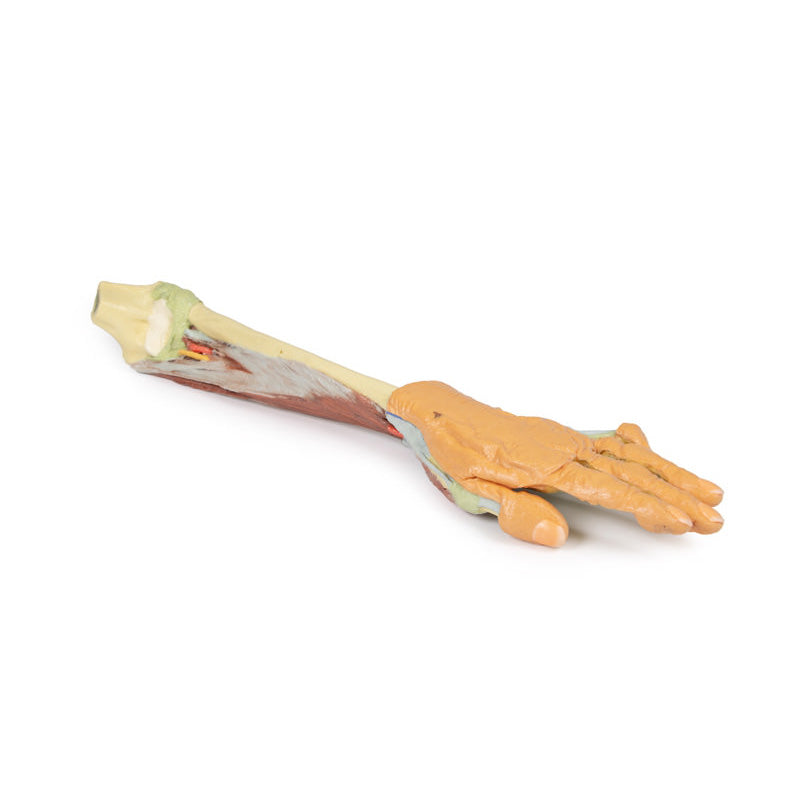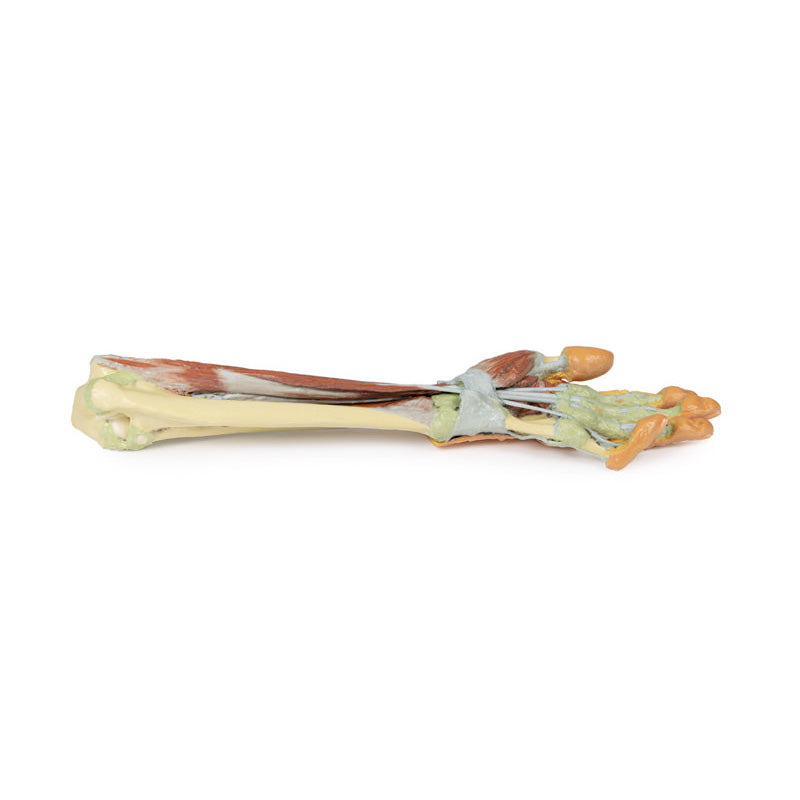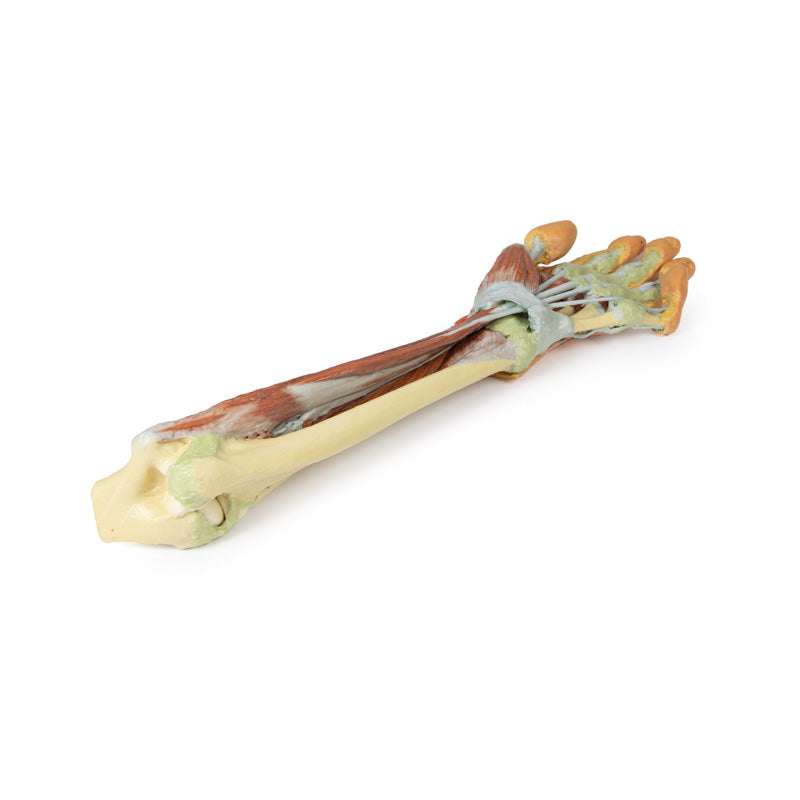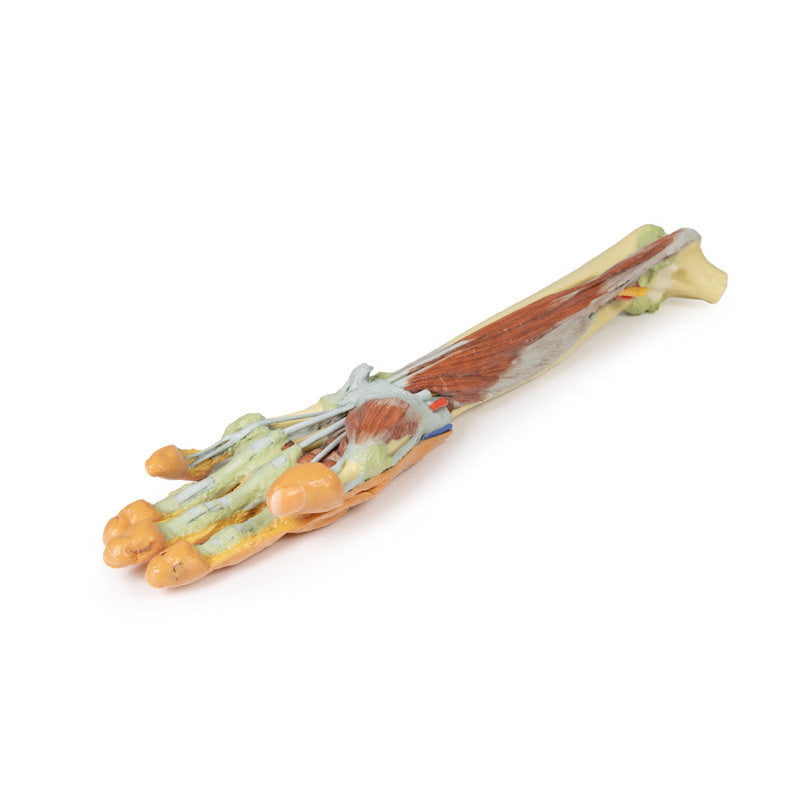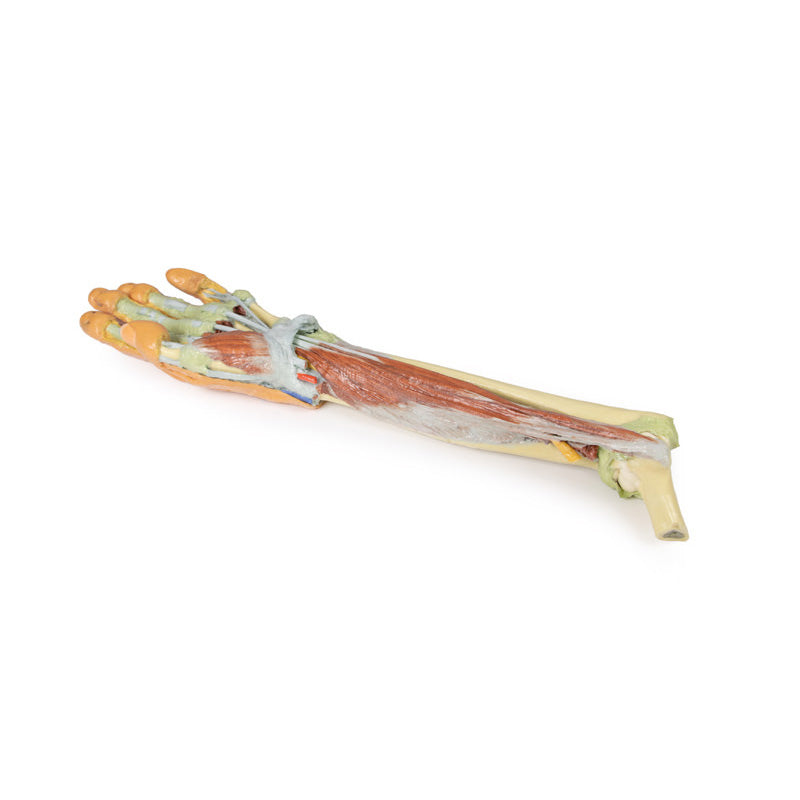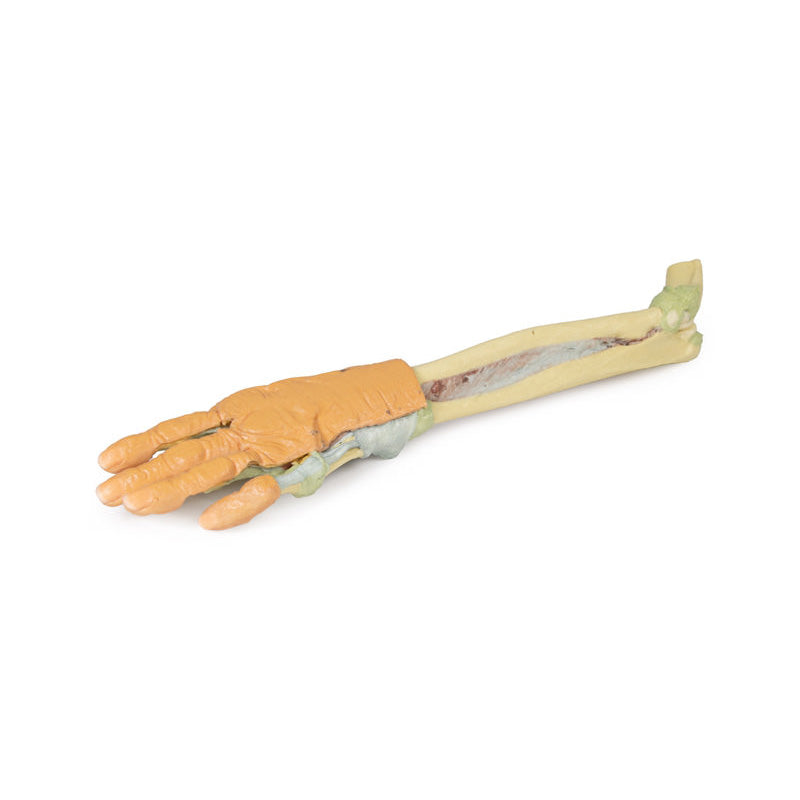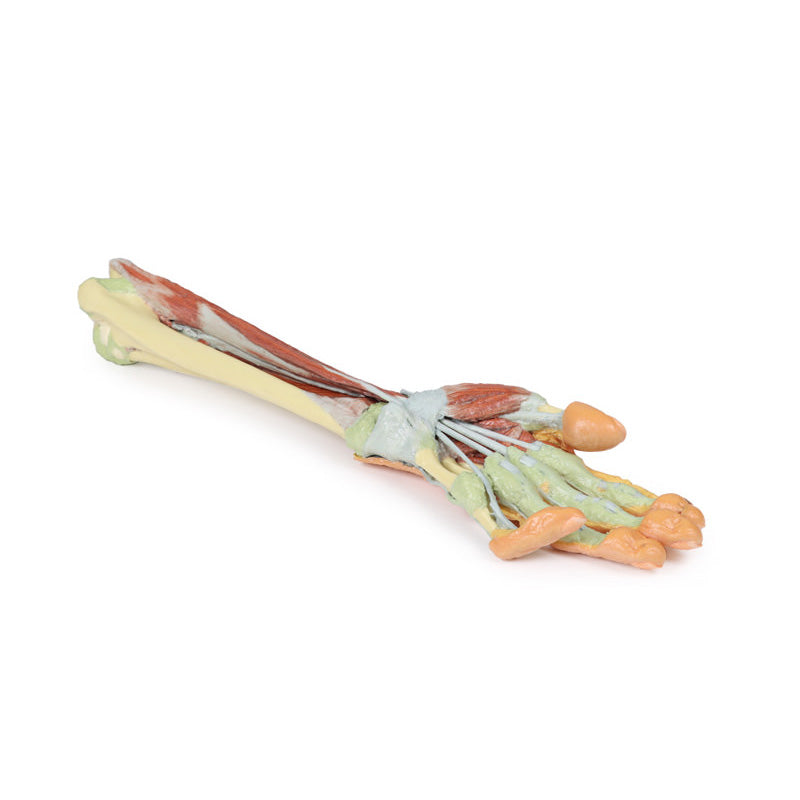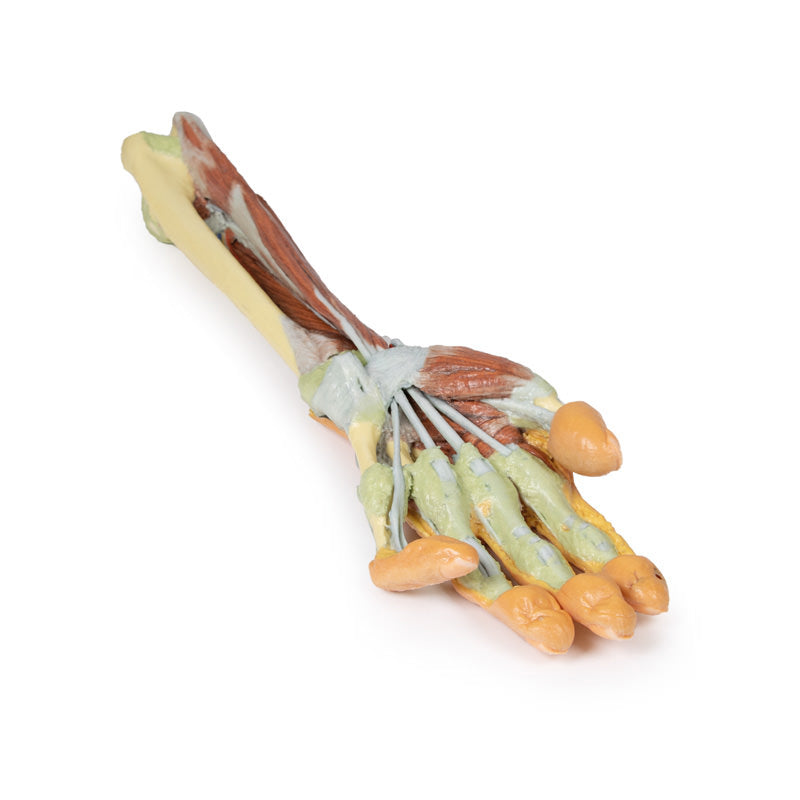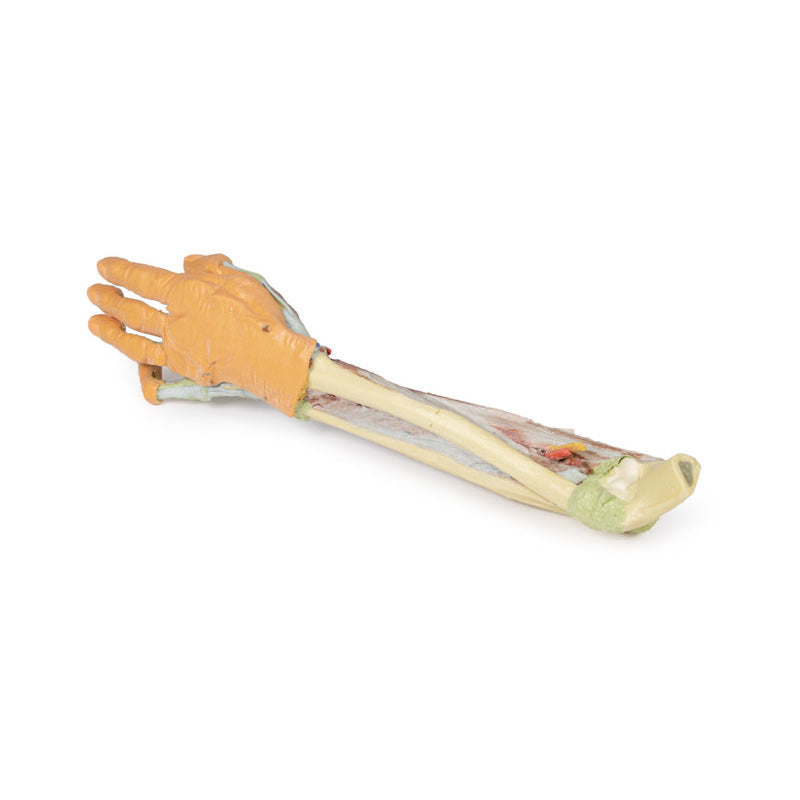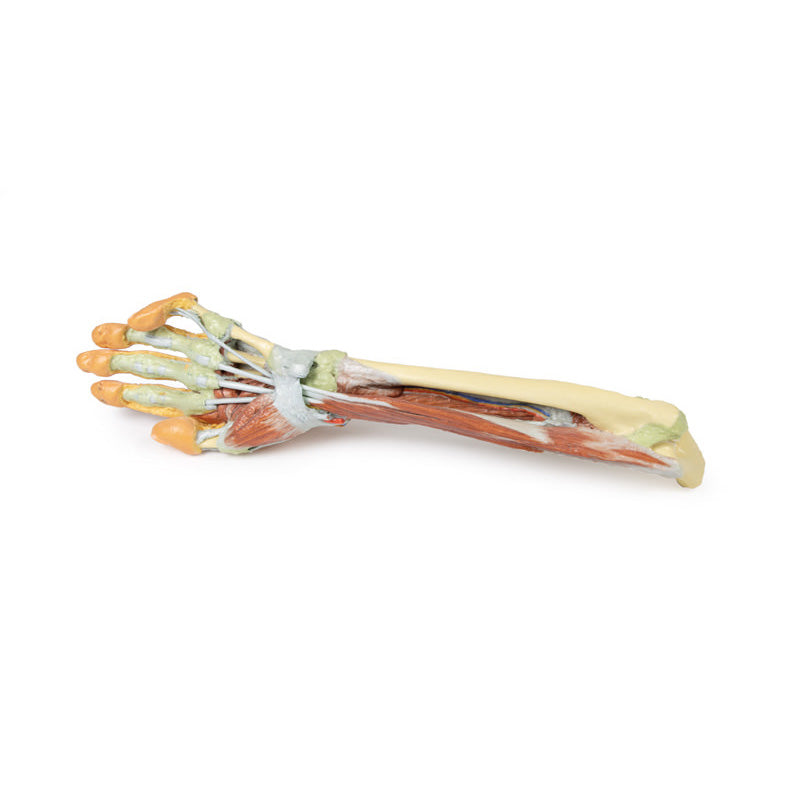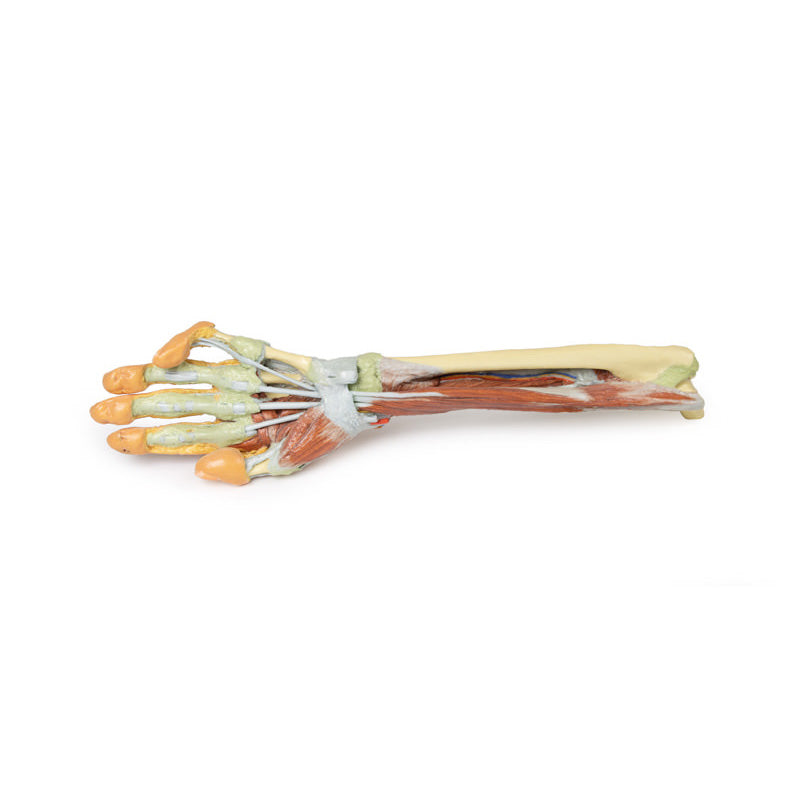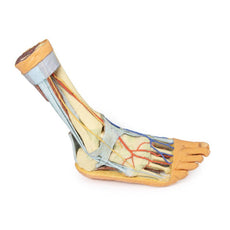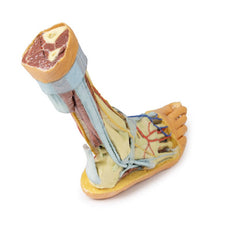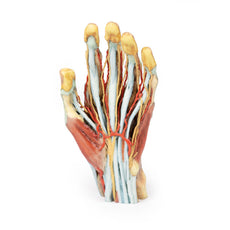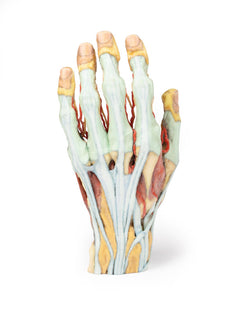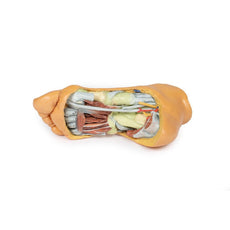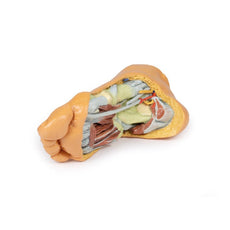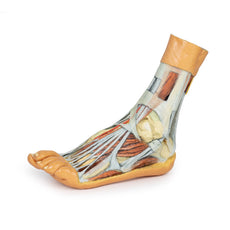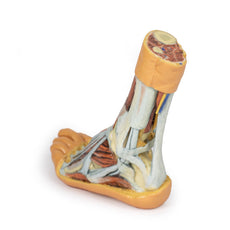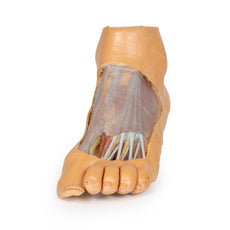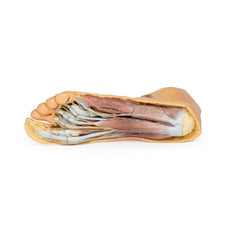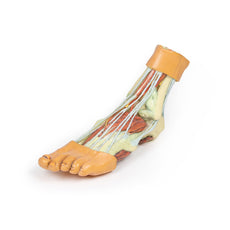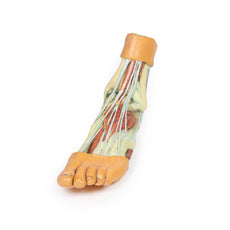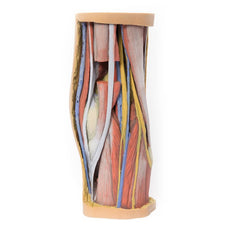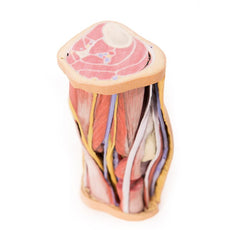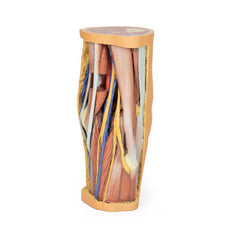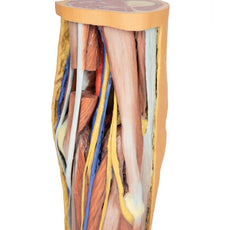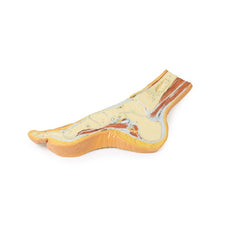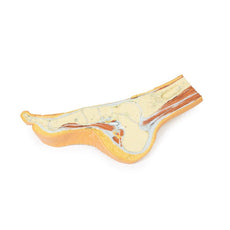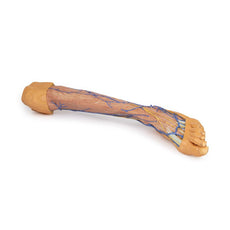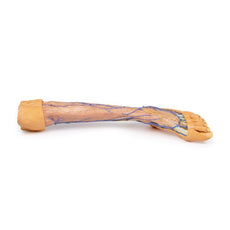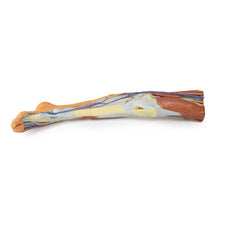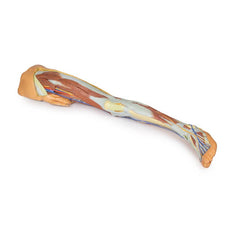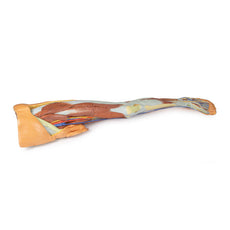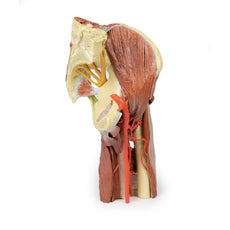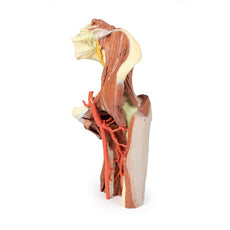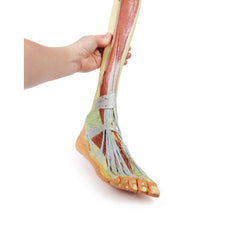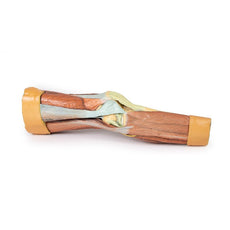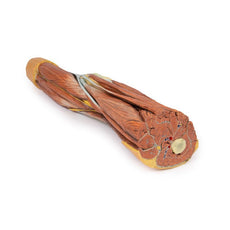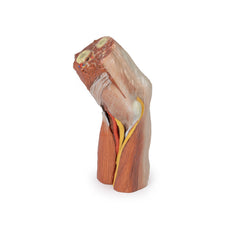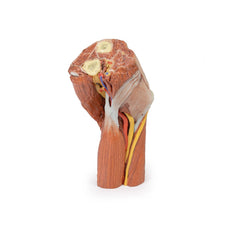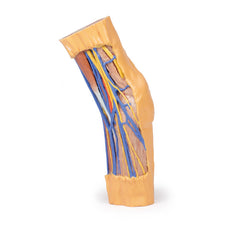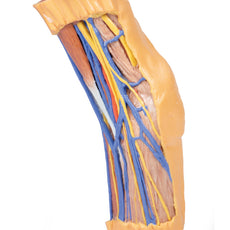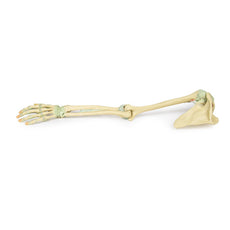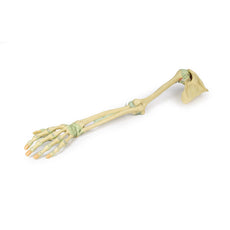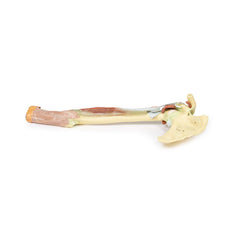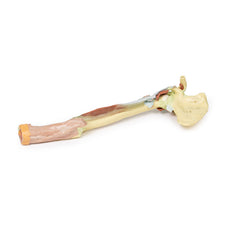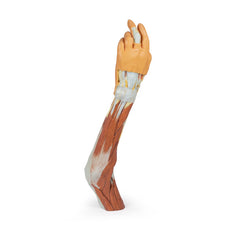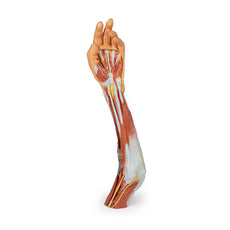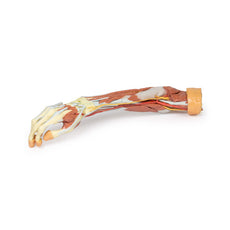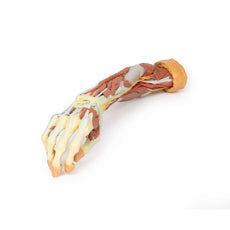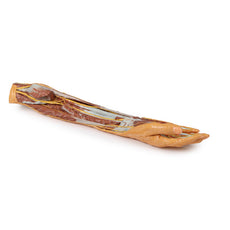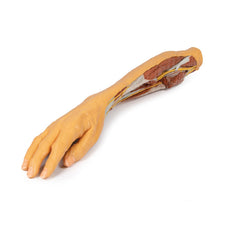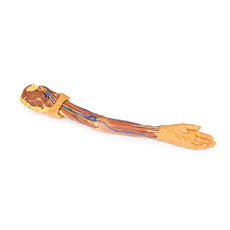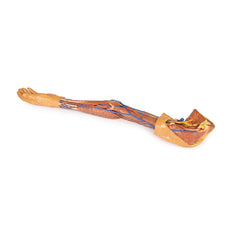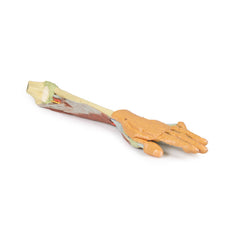Your shopping cart is empty.
3D Printed Forearm and Hand with Deep Dissection
Most of the remaining neurovascular structures and musculature of the forearm have been removed to show the anterior interosseous artery, vein and nerve resting on the interosseous membrane and approaching the pronator quadratus muscle. With the surrounding musculature dissected the radial origin of the flexor digitorum superficialis is fully exposed, with the distal tendons passing deep to the flexor retinaculum as they pass to the dissected palmar surface of the hand. The distal insertions of the dissected forearm musculature (e.g., brachioradialis, flexor carpi radialis, flexor carpi ulnaris, extensor carpi radialis longus and brevis) and radial artery are visible at the wrist.
Within the hand, these tendons pass to their insertions through the fibrous sheaths of the digits (along with the preserved tendons of the flexor digitorum profundus). Laterally the flexor pollicis longus tendon passes to the first digit surrounded by the thenar eminence musculature, while medially the fibrous sheath of the fifth digit has been dissected. The deep dissection of the hand also demonstrates the transverse and oblique heads of the adductor pollicis, as well as the palmar view of the first dorsal interosseous muscle. The skin on the dorsum of the hand has been largely retained, but has been dissected medially to demonstrate the course of the extensor digitorum and extensor digiti minimi tendons, as well as the extensor expansion.
Download Handling Guidelines for 3D Printed Models
GTSimulators by Global Technologies
Erler Zimmer Authorized Dealer

8.0 lb
3D Printed Forearm and Hand with Deep Dissection
Item # MP1514
$1,063.00
$1,182.00
You save $119.00
Need an estimate?
Click Add To Quote

Features & Specifications
-
by
A trusted GT partner -
FREE Shipping
U.S. Contiguous States Only -
3D Printed Model
from a real specimen -
Gov't pricing
Available upon request
About This Item
3D Printed Forearm and Hand with Deep Dissection
This 3D printed specimen of a left upper limb preserves a deep dissection from the distal humerus to the palmar surface of hand. The musculature surrounding the distal humerus has been removed except for the humeral origin of the flexor digitorum superficialis from the medial epicondyle. The elbow joint capsule has been dissected and opened anteriorly to demonstrate the articulation of the distal humerus, proximal radi3D Printed Forearm and Hand with Deep Dissection
This 3D printed specimen of a left upper limb preserves a deep dissection from the distal humerus to the palmar surface of hand. The musculature surrounding the distal humerus has been removed except for the humeral origin of the flexor digitorum superficialis from the medial epicondyle. The elbow joint capsule has been dissected and opened anteriorly to demonstrate the articulation of the distal humerus, proximal radius and proximal ulna. The distal portion of the biceps brachii tendon and brachialis muscle is visible in the cubital fossa near the brachial artery, brachial vein, and median nerve.Most of the remaining neurovascular structures and musculature of the forearm have been removed to show the anterior interosseous artery, vein and nerve resting on the interosseous membrane and approaching the pronator quadratus muscle. With the surrounding musculature dissected the radial origin of the flexor digitorum superficialis is fully exposed, with the distal tendons passing deep to the flexor retinaculum as they pass to the dissected palmar surface of the hand. The distal insertions of the dissected forearm musculature (e.g., brachioradialis, flexor carpi radialis, flexor carpi ulnaris, extensor carpi radialis longus and brevis) and radial artery are visible at the wrist.
Within the hand, these tendons pass to their insertions through the fibrous sheaths of the digits (along with the preserved tendons of the flexor digitorum profundus). Laterally the flexor pollicis longus tendon passes to the first digit surrounded by the thenar eminence musculature, while medially the fibrous sheath of the fifth digit has been dissected. The deep dissection of the hand also demonstrates the transverse and oblique heads of the adductor pollicis, as well as the palmar view of the first dorsal interosseous muscle. The skin on the dorsum of the hand has been largely retained, but has been dissected medially to demonstrate the course of the extensor digitorum and extensor digiti minimi tendons, as well as the extensor expansion.
Download Handling Guidelines for 3D Printed Models
GTSimulators by Global Technologies
Erler Zimmer Authorized Dealer
These items normal warranty are two years, however the warranty doesn’t cover “wear and tear”. The manufacturer does have 100% quality control on these models.
The models are very detailed and delicate. With normal production machines you cannot realize such details like shown in these models.
The printer used is a color-plastic printer. This is the most suitable printer for these models.
The plastic material is already the best and most suitable material for these prints. (The other option would be a kind of gypsum, but this is way more fragile. You even cannot get them out of the printer without breaking them).The huge advantage of the prints is that they are very realistic as the data is coming from real human specimen. Nothing is shaped or stylized.
The users have to handle these prints with utmost care. They are not made for touching or bending any thin nerves, arteries, vessels etc. The 3D printed models should sit on a table and just rotated at the table.
The models are very detailed and delicate. With normal production machines you cannot realize such details like shown in these models.
The printer used is a color-plastic printer. This is the most suitable printer for these models.
The plastic material is already the best and most suitable material for these prints. (The other option would be a kind of gypsum, but this is way more fragile. You even cannot get them out of the printer without breaking them).The huge advantage of the prints is that they are very realistic as the data is coming from real human specimen. Nothing is shaped or stylized.
The users have to handle these prints with utmost care. They are not made for touching or bending any thin nerves, arteries, vessels etc. The 3D printed models should sit on a table and just rotated at the table.

by — Item # MP1514
3D Printed Forearm and Hand with Deep Dissection
$1,063.00
$1,182.00
Add to Cart
Add to Quote



